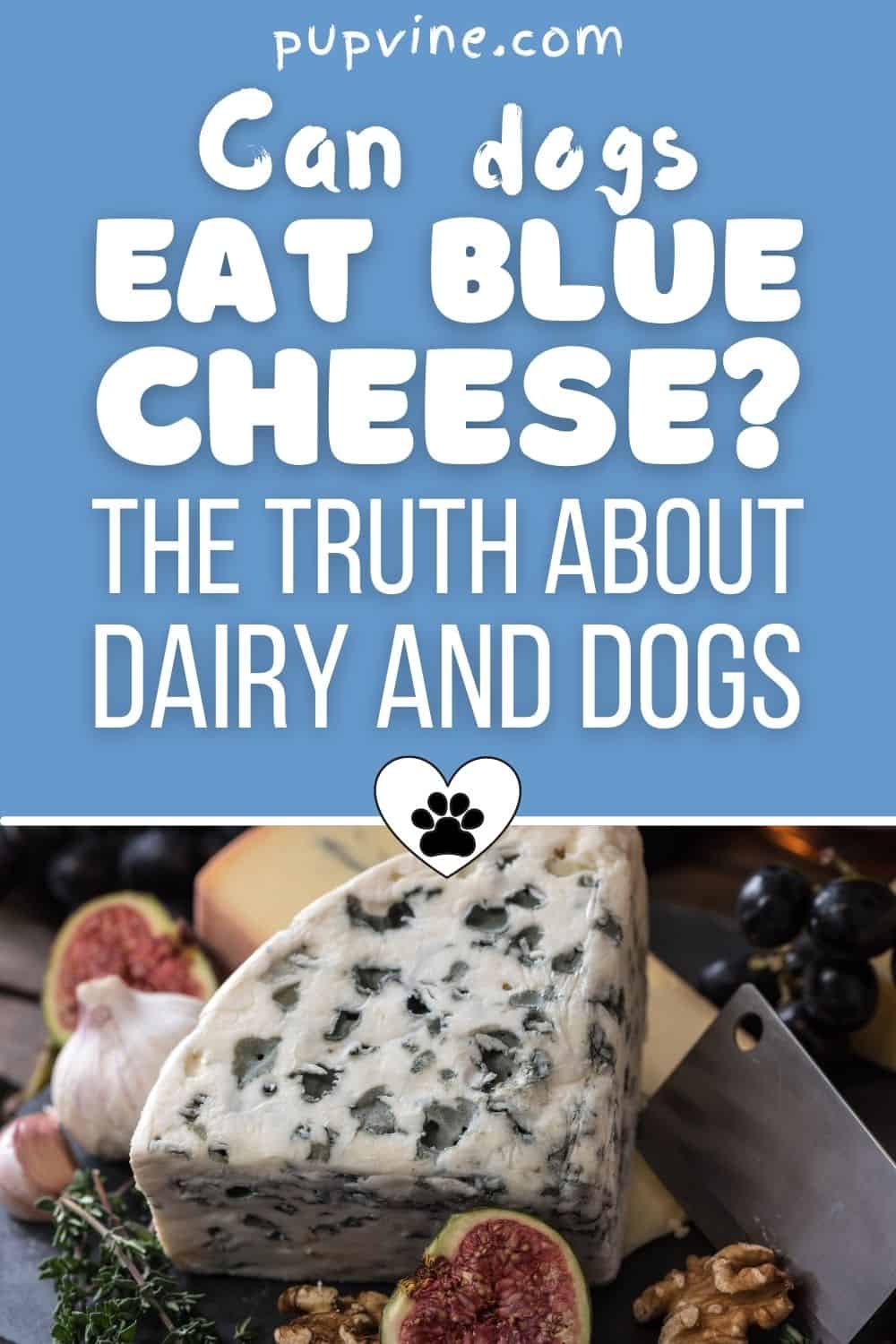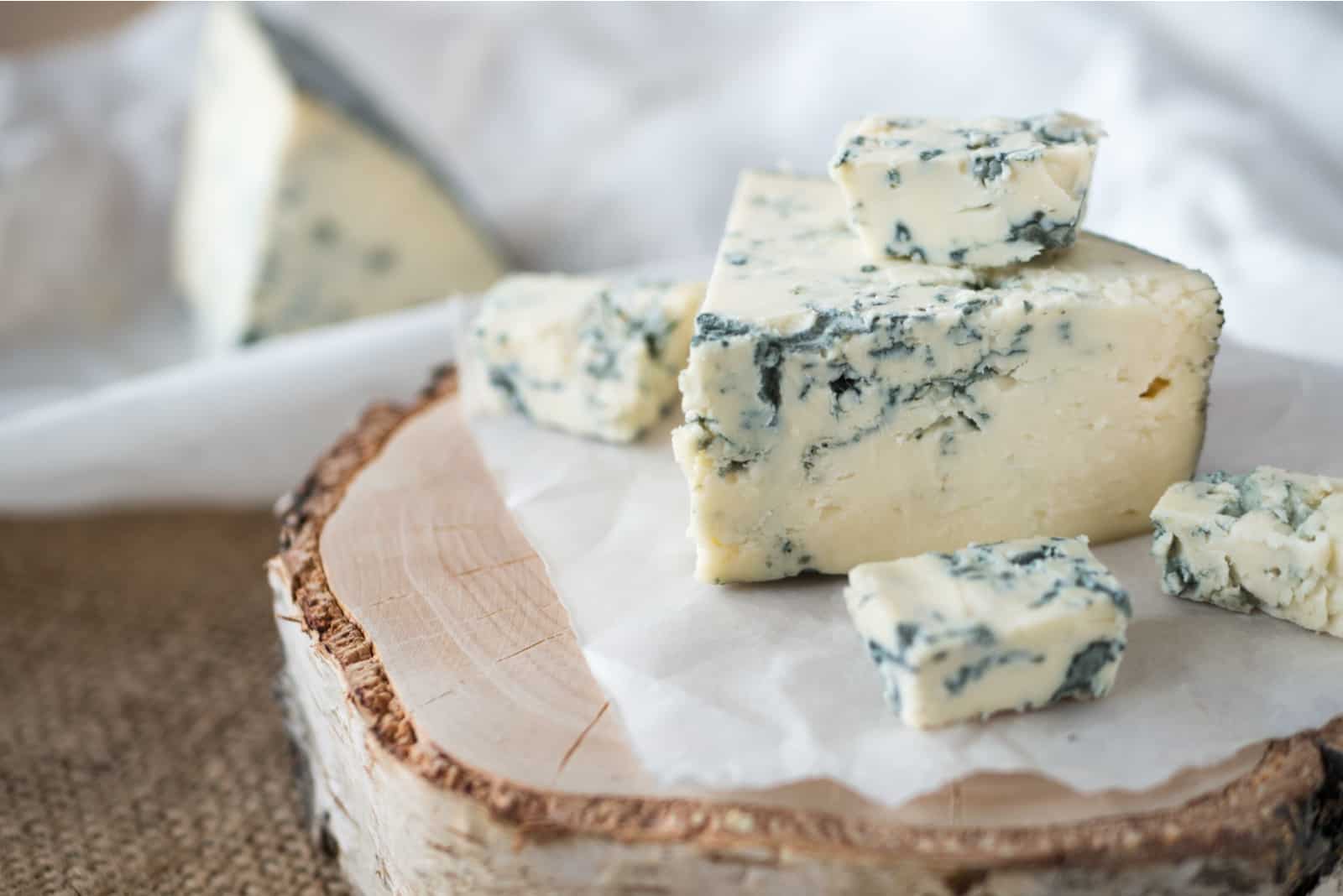Evidence shows that humans have been making and eating different types of cheese for at least 8,000 years. It is estimated that around 26 million tons of cheese was produced worldwide in 2019, and that trend doesn’t look likely to slow down any time soon.
Cheese lovers and connoisseurs appreciate the rich diversity of textures, flavors, and aromas of so many different cheeses, whether it’s Brie, Roquefort, Havarti, or Stilton.
We know the old quote about “too much of a good thing” being bad for us, but the truth is that millions of people just love cheese and probably eat much more than they should.
As dog owners, we often like to treat our furry friends by sharing our ‘human food’ with them. But what about something like blue cheese, a food that even divides cheese lovers? You either like it or loathe it with its pungent aroma and spicy saltiness. It is, as they say, an acquired taste!
What we are investigating here is whether blue cheese is something we should be feeding our dogs or if it can cause them harm.
The Problem With Lactose
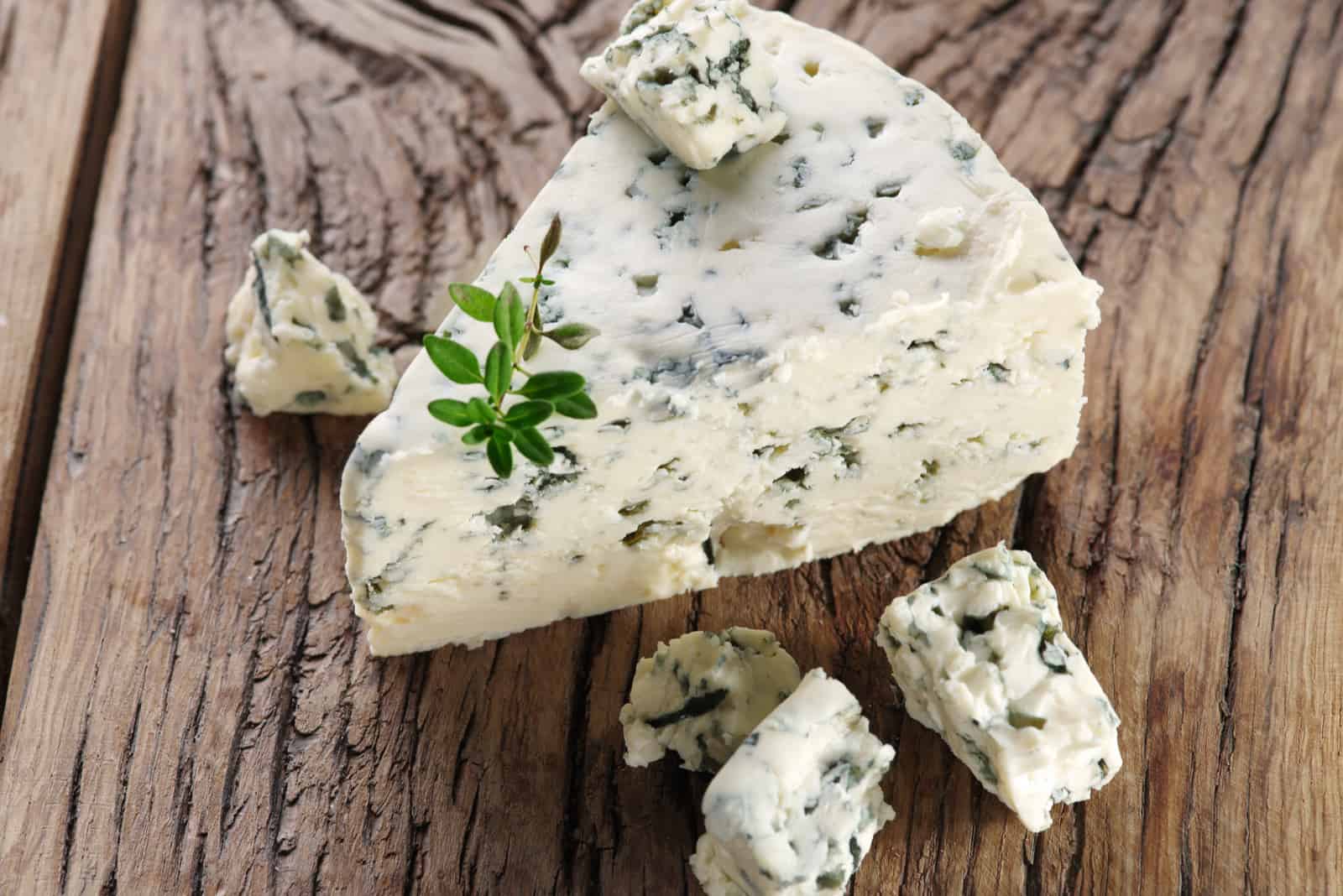
Let’s start with the basics: neither dogs nor humans are designed to consume milk (cows’, sheep, goats’ milk, etc.). Puppies produce an enzyme called lactase that allows them to digest their mother’s milk. Basically, milk is made from two molecules that need to be separated so that they can be digested, and lactase does just this.
However, once they have been weaned, they stop producing this enzyme (or produce very little, depending on the breed of dog), which means that, technically, all dogs are lactose intolerant! To add to this problem, some dogs are also allergic to dairy products. This increases the risk of stomach upset, as the food stays in the gut for longer as it can’t be digested. Instead of being absorbed by the digestive system, it begins to be broken down by bacteria, resulting in bloating and gas and even vomiting and diarrhea.
Lactose intolerance is a real problem, which means that things aren’t looking good for blue cheese as a safe food for dogs.
The irony is that most milk contains enzymes that can aid digestion. However, these are destroyed by the process of pasteurization, where the milk is heated to very high temperatures. The very process that makes milk safe to drink actually removes the thing that would make it easier to digest!
High Sodium Content
Too much salt in your dog’s diet is bad news. Sodium-ion poisoning is a potentially fatal condition for dogs. This happens either when the dog has consumed a moderate amount of salt over a long time or a large amount of salt in a short time. This is made worse when they don’t have access to fresh drinking water.
The body will try to compensate by taking water from within, starting with the brain cells. These cells begin to break down, resulting in a range of symptoms, including dizziness, trembling, vomiting, diarrhea, seizures, coma, kidney damage, and even death.
High Fat Content
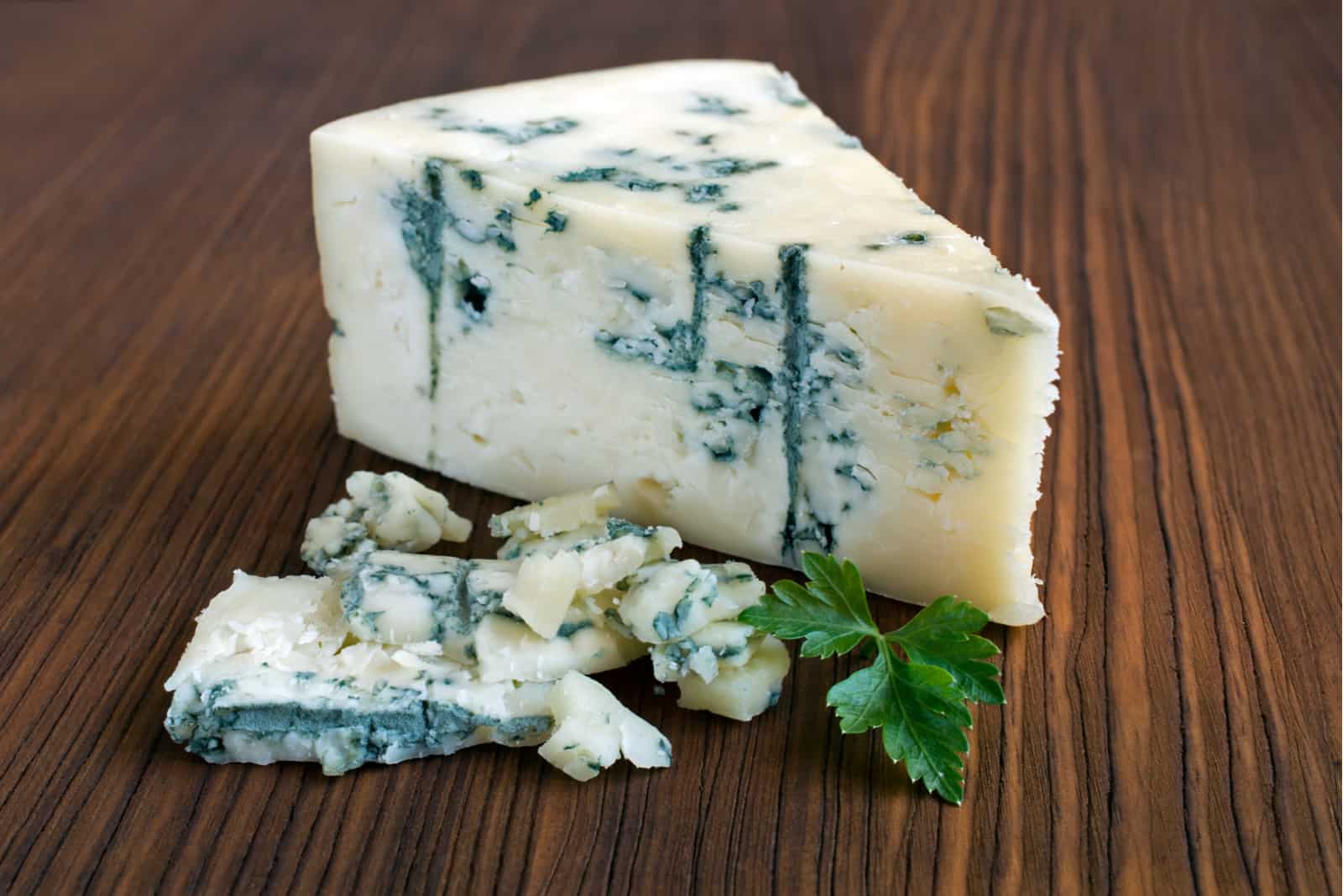
Although many kinds of cheese are high in calcium and are a good source of protein, they are let down by their fat content.
Dogs, just like humans and most other animals, need certain fats to survive. The trouble is, there are different types of fat; some are healthy and others not so much.
Many types of cheese are high in saturated fat, which increases the risk of high cholesterol levels and high blood pressure, which often results in cardiovascular problems. And as some of these kinds of cheese contain as much as 70% fat, with each gram packing in extra calories, then obesity becomes a real possibility if this food forms a regular part of any diet.
However, some sources claim that blue cheese can actually improve cardiovascular health! As well as this, it is also claimed that blue cheese such as Roquefort, Gorgonzola, Stilton, and Danish Blue (or Danablu) can boost the immune system, fight arthritis and osteoporosis, enhance memory, and reduce inflammation. When met with endorsements like these, it’s always best to check other sources as these claims can seem too good to be true, and they often are.
While a small amount of cheese can form part of a healthy, balanced diet for humans, you need to beware of anything that claims it is a superfood and take extra care when it comes to your precious pooch.
Any foods that are high in fat can cause pancreatitis in dogs. This is a painful disease where the pancreas becomes inflamed, usually causing abdominal pain and vomiting. Mild cases may last a few days, and the dog should recover. However, dehydration is a real risk, and the dog may even require surgery in severe cases.
Having seen the claims about blue cheese potentially having all these benefits, you might be tempted to opt for one of these types of cheese instead of another variety. However, doing so might just cost your dog its life.
The Dangers Of Mycotoxins
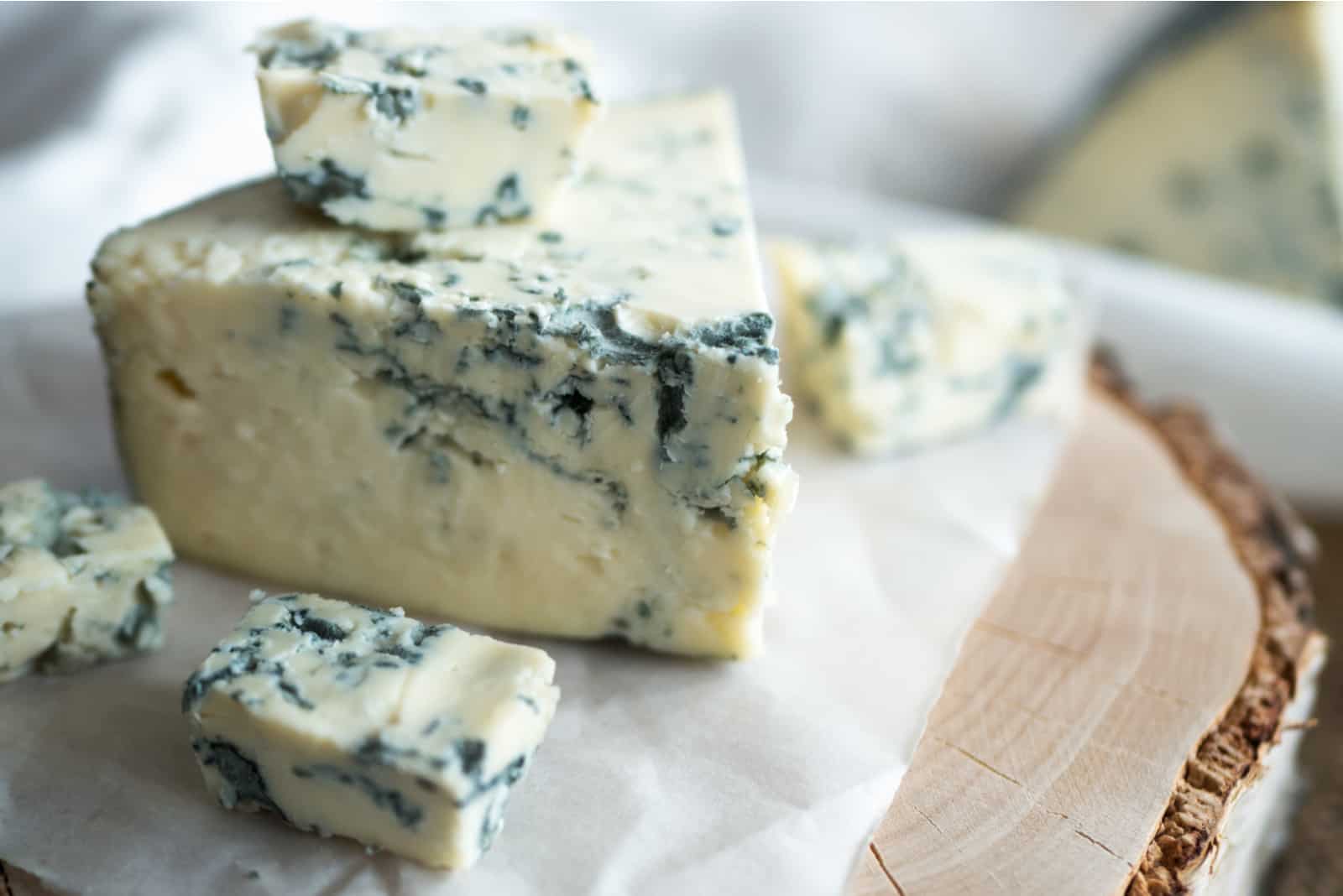
You may have wondered where blue cheese gets its unique appearance, flavor, and aroma from. This is all the work of a bacterial fungus related to the useful drug penicillin.
Roquefortine C is a common component in Gorgonzola, Stilton, Danish Blue, and (as you may have guessed) Roquefort cheese. It is actually classified as a powerful neurotoxin and is highly toxic in large doses. The only reason it has been passed as safe for food is that it is used in such small quantities.
The toxicity increases as the expiry date passes, which means it is a good idea to eat blue cheese containing Roquefortine well before this time. Once it is past its best, you will find that the smell becomes stronger and will start to have a hint of ammonia about it. If so, it’s time to throw it away!
What Is That Smell About?
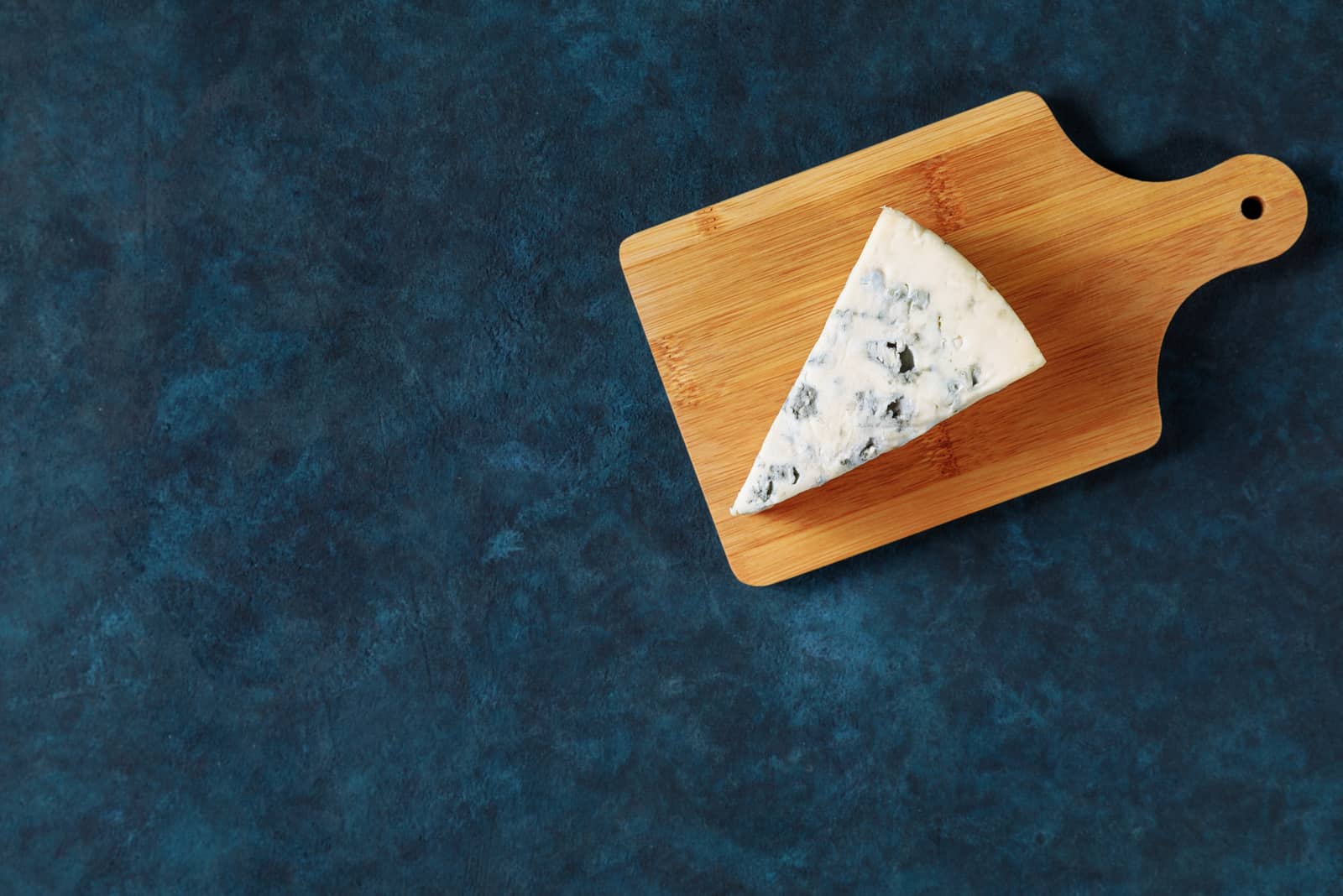
We touched on the pungent aroma of blue cheese in the last section, but it’s worth mentioning that whatever your intentions when it comes to feeding your dog are, they might well reject any food that doesn’t smell good to them.
When we smell something unpleasant, we screw up our noses and grimace. It’s a natural, inbuilt reaction, a defense mechanism designed to steer us away from hazards, such as eating moldy foods that might make us ill or worse. Over the centuries, we have adapted our senses to overcome this to some extent, which helps some of us to cope with the powerful smell of certain types of cheese without rejecting it.
Our sense of taste has also developed, and we have about 10,000 taste buds. While our sense of smell is connected with taste, it isn’t anywhere nearly as advanced, even though it contributes as much as 90% to anything we taste!
However, the opposite is true for dogs. They have a fantastic sense of smell, between 10,000 and 100,000 times better than our own, but they have only 1,700 taste buds. This means that they have a far stronger reaction to smell and are more likely to stop short of eating something they don’t like the smell of.
The aroma of blue cheese comes from the different types of bacteria used in the manufacturing process, resulting in a range of flavors and textures. We’ll look at a couple of these to give you a better idea of why that smell is so distinctive.
• Brevibacterium linens – this organism is a lactic acid bacteria used in ‘mold ripened’ cheese and contributes to the smell. It is also present on human skin where it causes foot odor and other unpleasant body odors.
• Butyric acid – this is a naturally occurring fatty acid that also gives cheese a distinctive aroma and is most prominent in harder cheese, such as parmesan. You may have noticed that the smell of parmesan is vaguely familiar but not made the unsavory connection; butyric acid is what gives vomit its characteristically unpleasant smell!
This is why your dog might turn its nose up and retreat to a dark corner if you offer her anything with blue cheese.
On the other hand, some dogs are just weird. They’ll drag out the most disgusting scraps from the depths of the trash can and happily munch their way through it. In a way, they’re like humans, as we all have different tastes.
What we can say is that, in general, the majority of dogs will find the smell of blue cheese too strong, and they will not enjoy eating it.
Having explored that stomach-churning avenue, let’s turn back to more tasteful topics in the conclusion!
What’s The Verdict?

Photo from: @frasersbulls
On the whole, it is best to avoid giving your dog any types of cheese, especially not in large amounts or on a regular basis. If you must, try giving other dairy products like sour cream or whipped cream Puppuccino.
The merits of cheese in a human diet are debatable, despite claims to the contrary regarding blue cheese in particular. Over-consumption of cheese (especially highly-processed brands) has been linked to obesity, heart disease, strokes, and high cholesterol levels. And that’s before we mention lactose intolerance and allergic reactions to dairy products. This problem is often overlooked and ignored, causing discomfort and sickness in millions of people.
This becomes even more of a problem when we start to include cheese in our dog’s diet. The effects seem to be magnified, as they have notoriously delicate digestive systems and are more sensitive to certain ingredients than we are.
Blue cheese is high in sodium and has a high fat content, both of which could cause your dog health problems in the long term. More importantly, dogs are very sensitive to Roquefortine C, the bacteria that makes those distinctive blue streaks. The toxicity to humans is low, but dogs can have severe reactions to this bacteria, causing an upset stomach which will show itself in the usual way.
Smaller dogs, or those who are more sensitive, will have a more extreme reaction that could cause tremors, seizures, and a high temperature. If you suspect that your dog has consumed a large quantity of blue cheese and they are displaying these symptoms, then you should seek medical advice from your veterinarian immediately.
So, from all that we have learned so far, it is safe to say that blue cheese is bad for dogs.
The salt, fat, and Roquefortine just make it too much of a risk.
Don’t be too disappointed at not being able to share your human food with your furry pal, though. It’s a fair bet that you’re giving them the best diet through their regular food. They’ll be getting all the nutrients they need without having to scrounge for treats from your plate.
Without wishing to contradict any of the points made above about lactose intolerance, you might consider an alternative to blue cheese if you really want them to have a tasty treat that provides some extra calcium and protein.
If you’re absolutely certain that your dog can handle a small amount of dairy product, then you might try a low-fat version, like cottage cheese or goat cheese. The latter example is not only low in fat but also has less sodium and is lower in calories.
Avoid feta cheese (high sodium content) or cream cheese (usually high in fat, though you might find a low-fat variety), especially those with added ingredients such as garlic or chives, as dogs are sensitive to these.
The key is to keep any kind of human food as an occasional treat and use your common sense. As for this last point, you’ve already proved that you are acting responsibly, or you wouldn’t be reading this right now.
